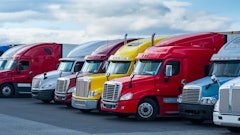
The New York Times’ Elon Musk by Walter Isaacson includes a story about Tesla’s early supply chain struggles with batteries. The vital car component started at $1.90, but after traveling to various locations worldwide for enhancements and assembly, landed at its destination weeks later for $15,000.
Shipping inefficiencies negatively impacted car production and profitability. But even worse, the process went against the company’s primary automotive differentiator: achieving sustainable energy and minimizing environmental impact at scale.
The story illustrates the complexities of today’s supply chain and the added pressure of managing logistics with environmental sustainability in mind. Companies are now setting net-zero carbon goals for 2050 and beyond, recognizing that it will be a long and challenging road.
Among all the headlines for how artificial intelligence (AI) will change the world is a connection to protecting the planet. Here’s five ways food manufacturers can use AI to operate supply chains more sustainably, adding a new meaning to “going green” — saving money while saving the planet.
1. Logistics planning
Logistics planning aims to use systems, equipment, and storage facilities as efficiently as possible. AI is excellent at processing vast amounts of data to identify patterns and trends that can help optimize the movement of goods. This includes product volumes, inventory storage locations, shipment ETAs, and delivery route mileage.
Food shippers and logistics providers are now using systems that apply machine learning algorithms to accurately predict shipment ETAs across all transportation modes. For ocean container shipments, AI systems can accurately forecast weather conditions and diagnose the impact of disruptive events along each shipment’s route.
Due to multi-terminal stops and widely variable transit times, predicting arrival times for less-than-truckload (LTL) shipments has always been challenging. Not anymore. With AI, shippers and logistics providers can predict the delivery times of LTL shipments within minutes to reduce costs and give business and residential customers a better delivery experience.
2. Mode management
Moving freight by truck or plane is less sustainable than ocean and rail transport. According to the Massachusetts Institute of Technology (MIT), over-the-road hauling can emit over 100 times as much CO2 as ships carrying the same freight amount. Data from the EPA shows moving cargo by rail rather than truck lowers GHG emissions by up to an average of 75%.
Leveraging AI for sustainable network optimization makes it possible to analyze vast internal and external data to create multimodal transportation solutions. The analysis balances several critical factors, including service expectations, length of haul, freight origin and destination, cost, and environmental impact. Beyond benefiting the environment, introducing more sustainable options can also cut a shipment’s transportation costs by around 60%.
3. Shipment consolidation
Many companies rely on milk-run shipments for one key benefit: to prevent stockouts. However, when it comes to the environment, this type of logistics is challenging. Shipments may occur before truly needed, run partially empty, and require additional material handling and equipment that severely strains sustainability.
With the assistance of AI, food shippers and their logistics partners can determine the best cadence for cargo that balances service requirements with sustainability. This may mean monitoring inventory patterns to create consolidated shipments or delaying freight to maximize a trailer’s volume. Doing so reduces the need for additional over-the-road truck movements that generate harmful emissions.
4. SmartWay selections
The SmartWay program provides a comprehensive system for tracking, documenting, and sharing information about fuel usage, freight emissions, and environmental risks across the supply chain. Freight shippers, carriers, and logistics companies voluntarily partner with the EPA to measure and improve operations to reduce their ecological footprint.
A logistics partner that uses AI to help procure capacity can factor in the sustainability efforts of carriers. The logistics partner can prioritize top-ranked fleets using SmartWay data without manually filtering through thousands of transportation providers.
Additionally, AI can examine data retrospectively to make future recommendations. For example, a logistics partner can use AI to determine the financial and environmental costs of placing 50 shipments on a carrier and then assess better alternatives for future loads under various scenarios and carriers. The analysis offers a quick, easy way to advance sustainability goals with negligible supply chain disruptions.
Food shippers can also leverage the AI capabilities of logistics partners to monitor their sustainability metrics in a single dashboard. A logistics partner that tracks savings in carbon emissions from load consolidations and eco-friendly carriers, among other strategies, can provide shippers with clear visibility of their progress toward goals.
5. Working in the warehouse
Estimates show that 90% of warehouses primarily rely on manual processes. This creates space and energy inefficiencies. The more a warehouse relies on people to operate the facility, the more energy it consumes. By turning to technology, food shippers and third-party logistics partners can increase throughput while decreasing the environmental footprint.
Innovations like dynamic slotting use AI’s advanced algorithms to decrease inventory space. AI improves inventory management by predicting demand, tracking current inventory, and optimizing stocking levels. AI can suggest an appropriate box size based on an order’s dimensions to minimize packaging waste.
The technology’s influence also benefits equipment performance. Analyzing sensor data helps AI establish predictive maintenance programs to keep equipment and refrigeration units operating efficiently. AI’s influence on a warehousing operation minimizes the building’s environmental impact through less energy consumption and waste production. The improvements also generate significant cost savings.
Sustainability has moved to the forefront of supply chain strategies. Increasingly, food shippers are considering logistics providers’ AI experience and expertise when evaluating partners to maximize environmental and financial savings.

























